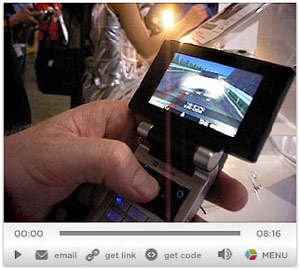 It’s been a fairly hectic six weeks for Japan’s mobile industry and therefore also for us here at WWJ. Starting with the Tokyo Game Show here in late September, followed in short order by CEATEC and DoCoMo’s new 903i-series launch — and combined with the MNP (mobile number portability) official launch on 24 October — it’s been crazy.
It’s been a fairly hectic six weeks for Japan’s mobile industry and therefore also for us here at WWJ. Starting with the Tokyo Game Show here in late September, followed in short order by CEATEC and DoCoMo’s new 903i-series launch — and combined with the MNP (mobile number portability) official launch on 24 October — it’s been crazy.
Your WWJ staff have also been deep into planning next week’s Mobile Intelligence Japan (MIJ) mission, due to start on Sunday afternoon and we have over 250 folks registered for our next Mobile Monday event at the Canadian embassy on Monday 13 November! Phew!
We know how much everyone enjoys watching our web video programs and so we’ve bundled a few together that were finally produced over the last little while. The Tokyo Game Show was, as always and then some, a super event this year, celebrating their 10th anniversary and was held at Makuhari Messe; WWJ saw previews of DoCoMo’s 903i “Mega Games” while KDDI was running a massive (mobile) multiplayer Bomberman exhibit and SoftBank Mobile stepped out if full force with a wide selection of games targeted at Sharp’s 905SH handset.
Also, we have added our video coverage from DoCoMo’s new 903i-series launch, which introduced a whopping 14 new handsets complete with some interesting 3G data service upgrades as well.
Finally, DoubleClick Japan introduced their “Mobile MK” software and were kind enough to show us a full demo. — Yoroshiku!


 It’s been a fairly hectic six weeks for Japan’s mobile industry and therefore also for us here at WWJ. Starting with the Tokyo Game Show here in late September, followed in short order by
It’s been a fairly hectic six weeks for Japan’s mobile industry and therefore also for us here at WWJ. Starting with the Tokyo Game Show here in late September, followed in short order by